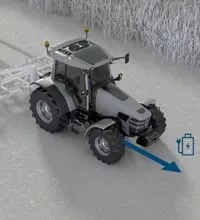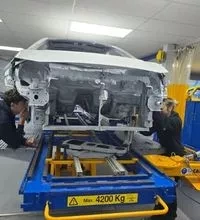Five ways trucks are becoming safer
In this article: Commercial vehicles are the life blood of business, find out how firms are making them safer for users and others on the road
Commercial vehicles can be in the headlines too often for the wrong reasons, but companies are working hard to develop vehicles that allow drivers to see the environment more clearly, while legislation is also shifting to help speed up improvements. Here are the five ways that commercial vehicle safety is being improved:
1. The closer to the highway truck drivers sit, the easier it is for them to spot vulnerable road users such as cyclists. That is why more and more hauliers are deploying bin-wagon-derived models such as Mercedes-Benz's Econic on urban work, often as tippers or with fridge bodies. Their low-slung driving positions and acres of glazing allow drivers to look pedal-pushers and pedestrians teetering on the edge of the pavement in the eye and gauge their intentions. Econic is available with a full-height bi-fold glazed passenger door which offers greatly improved nearside vision.
2. London is driving operators to adopt models such as Econic, Scania's L-series and Dennis Eagle's Elite by becoming the first city in the world to introduce safety permits for trucks. Due to be launched in October, the scheme will rate them according to how much a driver can see through the cab windows. Zero-rated lorries can qualify for a permit if owners retrofit them with the sort of safety technology that is now widely available. It includes cameras which allow the driver to monitor the nearside blind spot, sensors which set off an in-cab warning if somebody gets too close to the nearside, and audible alerts which warn cyclists that the truck is about to turn left at a junction. The aim is to deter them from pedalling up the nearside of the lorry. If they do, they risk getting crushed.
3. Europe-wide legislation is mandating the installation of better safety technology at an OE level, with AEBS - Autonomous Emergency Braking Systems - made mandatory on most new trucks in 2015. They monitor the road ahead using radar and other sensors, and automatically apply the brakes if the lorry risks colliding with another vehicle. Such equipment is becoming increasingly sophisticated, with Active Brake Assist 5 available on the latest Mercedes Actros able to bring the truck to a complete stop if a pedestrian wanders out in front of it. The newcomer is the first volume truck to be fitted with cameras instead of side mirrors. The images appear in two displays mounted inside the cab, with distance lines helping the driver to better estimate any risk posed by following traffic when changing lanes or overtaking.
4. Research into better safety technology remains unceasing. Continental is working on a device designed to predict what somebody standing on the pavement will do next - stay where they are or step out into the traffic - by interpreting the subtle signs of their body language and applying the lorry's brakes if necessary. Knorr-Bremse Truck Services and Intel subsidiary Mobileye have come up with ProFleet Assist+, a retrofit package that includes lane departure warning and forward collision warning.
5. Other ways in which commercial vehicle safety is being enhanced involve common sense rather than electronics. The Department for Transport has opened a consultation into its plan to ban the use of tyres aged ten years and older on trucks, buses and coaches on safety grounds. The move follows a crash that occurred after a 19-year-old tyre blew out, resulting in a fatality. The consultation ends in September, with legislation potentially in force by 2020 if the department's measures receive widespread support.




